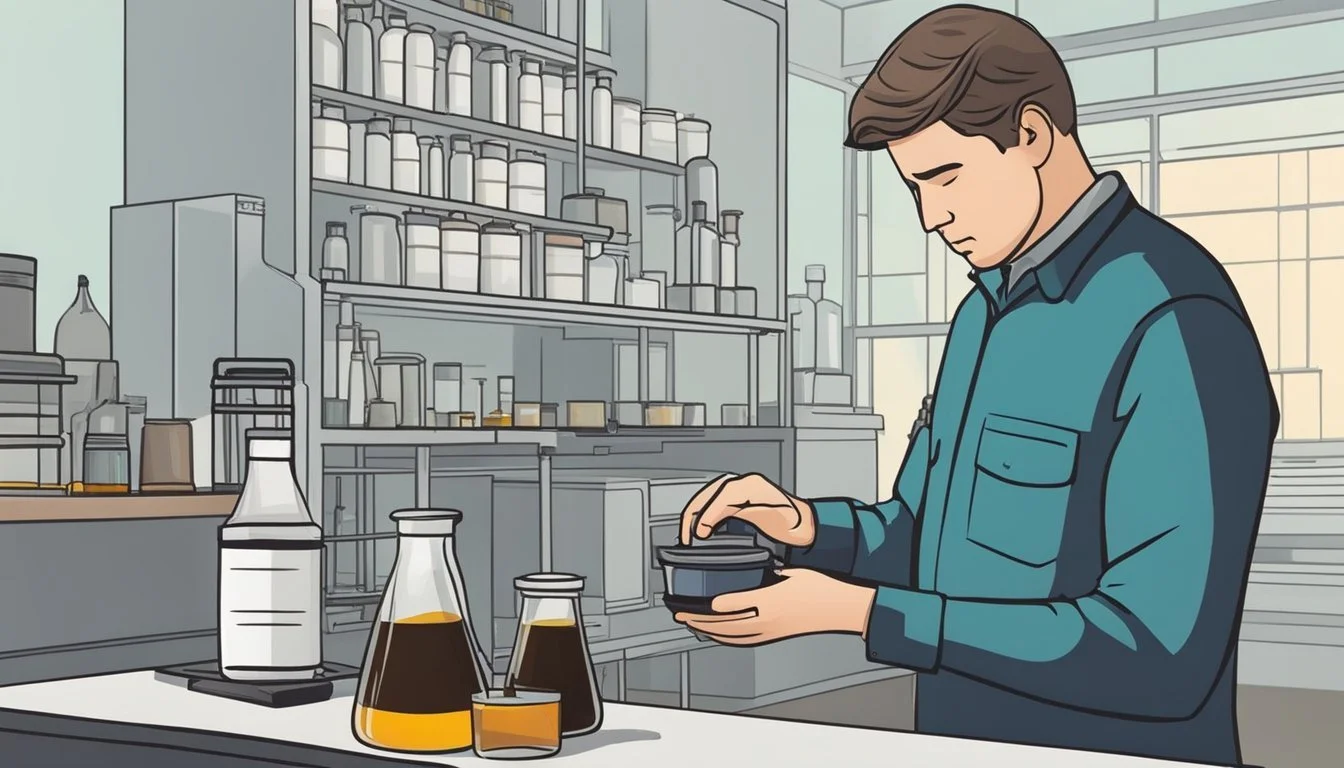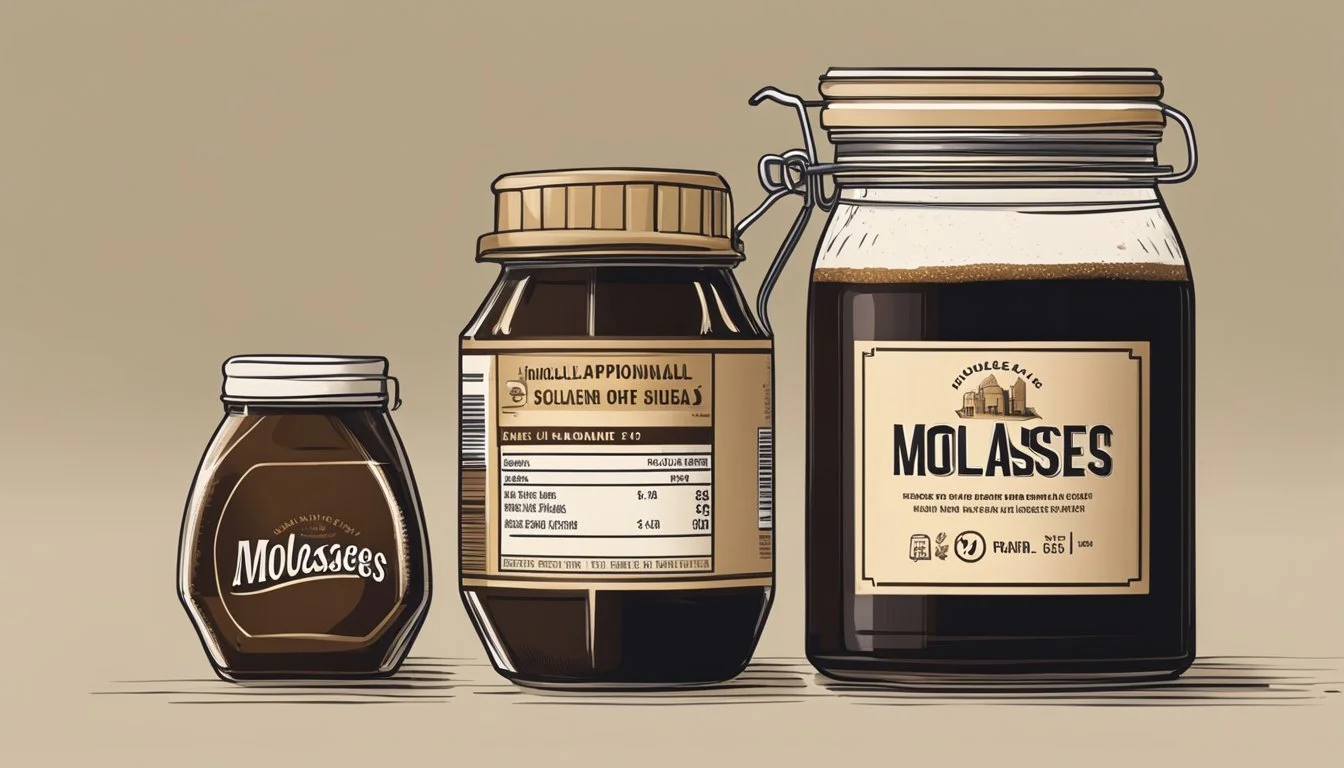Is it Safe to Use Expired Molasses?
Understanding Shelf Life and Usage
Molasses is known for its robust flavor and versatility in cooking, often used as a sweetener in baking, marinades, and even in beverages. Concerns about food safety frequently lead to questions about the shelf life of common kitchen staples like molasses, especially once the product's expiration date has passed. While many foods are strictly bound by these dates, molasses' high sugar content creates a naturally preservative environment, inhibiting microbial growth and allowing it to maintain its quality well beyond the printed date, provided it is stored correctly.
The quality of molasses can degrade over time, but this process is typically slow, manifesting as changes in its texture, color, or flavor. It is essential to conduct a sensory evaluation of expired molasses—checking for off odors, unusual textures, or mold growth—before use. Although the best-by date on molasses can be a helpful guide for peak quality, it is not a definitive indicator of safety. With proper storage, away from heat and humidity, molasses can remain a safe and flavorful addition to recipes long after its expiration date has elapsed.
Understanding Molasses
Molasses is a byproduct of sugar refining that comes in various types with distinct flavors and uses. It contains essential nutrients beneficial for health but has a limited shelf life.
Types of Molasses
Light Molasses: It's the sweetest and lightest type, often used in baking.
Dark Molasses: This type has a more robust flavor and is a byproduct of the second boiling of sugar cane juice.
Blackstrap Molasses: With a bitter flavor, it's the byproduct of the third boiling and is rich in vitamins and minerals.
Sulfured Molasses: Sulfur dioxide is added to young sugar cane as a preservative resulting in sulfured molasses.
Unsulfured Molasses: It is made from mature sugar cane without sulfur and has a cleaner sugar taste. This is the preferred type for consumption.
Nutritional Profile
Molasses is not just a sweetener; it's also a source of important nutrients. Here's a brief profile:
Vitamins: It contains B vitamins which are important for metabolism.
Minerals: A good source of minerals, providing:
Iron: Crucial for blood health
Calcium: Essential for bone strength
Magnesium: Important for muscle function
Potassium: Necessary for heart health
Shelf Life of Molasses
Molasses has a long shelf life if stored properly. It can typically be safe to consume for years past the best-by date, as long as it is kept in a cool, dry place and shows no signs of spoilage such as mold or a major change in texture.
Storage Guidelines
Proper storage is essential to maximize the shelf life and maintain the quality of molasses. Attention to temperature, light, and sealing methods ensures its longevity.
Ideal Storage Conditions
Molasses retains its quality when stored in a cool, dry, and dark place. Storing it at a stable temperature between 50°F and 70°F (10°C and 21°C) is optimal. Exposure to high temperatures can hasten the degradation of molasses, while light and moisture can lead to spoilage.
Refrigeration vs. Pantry
For unopened molasses, the pantry is the perfect storage location, provided it meets the aforementioned storage conditions. Once opened, molasses does not necessarily require refrigeration but doing so can extend its usability. If someone opts for pantry storage over refrigeration, they must ensure that the environment is consistently cool and away from direct heat sources.
Airtight Containers
It is crucial to use airtight containers to store molasses, especially after the seal is broken. Glass containers with tight-sealing lids are preferable as they do not interact chemically with the molasses. An airtight container protects against contaminants and moisture, both of which can introduce mold and bacteria. When transferring molasses to a different container, the user should wipe the rim and seal it properly to preserve its integrity.
Determining Molasses Quality
When assessing the quality of molasses, one should employ a multi-sensory approach focusing on visual cues, smell and taste, and the consistency of the product to ensure it has not spoiled.
Visual Inspection
The initial step in evaluating molasses quality is a visual inspection. Color is an indicator; molasses should have a rich, brown hue. If the color seems unusually light or dark compared to typical molasses, it may suggest degradation. One should also check for signs of mold, which can appear as fuzzy, discolored spots on the surface.
Smell and Taste Evaluation
Molasses should emit a sweet, distinctive odor that is familiar to those who have used the product before. An off-odor—anything that smells sour, fermented, or distinctly not like molasses—can indicate spoilage. If the smell is acceptable, a small taste test can follow. Quality molasses should taste rich and sweet, with no hint of bitterness.
Texture and Consistency Check
Lastly, the texture and viscosity are crucial factors. Quality molasses is typically thick and smooth. If the substance has developed an irregular texture, is overly watery, or has crystallized, this could denote compromised quality. However, some crystallization can occur naturally and can be resolved by gently warming the molasses.
Molasses Expiration Details
Molasses is a sugar-derived syrup used as a sweetener in baking that often comes with a best-by date, rather than a strict expiration date, indicating its potential shelf life.
Expiration Dating Interpretation
The best-before and sell-by dates on molasses are generally set for about two years after production, used by manufacturers as an estimate for peak quality. Consumers should understand that molasses typically remains consumable beyond these dates, provided that storage conditions are appropriate and there are no signs of spoilage.
Does Molasses Go Bad?
Yes, molasses can go bad, but it has a long shelf life. Spoilage is typically caused by improper storage, such as exposure to heat and humidity. Signs of bad molasses include an off odor, mold growth, or a drastic change in texture. As a precaution, one should inspect the molasses if it's beyond the indicated best-by date, looking for changes like crystallization or a loss of flavor, before use in recipes.
Longevity of Unopened vs. Opened Molasses
Unopened molasses can last well beyond its best-by date, often several years if stored in a cool, dry, and dark place. Once opened, the longevity decreases slightly due to exposure to air and potential contaminants, but it can still be safely used for extended periods if stored correctly, tightly sealed, and away from direct light and high temperatures. The shelf life of opened molasses is generally shorter than unopened, but it can still last for years without significant degradation when properly maintained.
Signs of Spoilage
When molasses goes bad, it exhibits specific signs of spoilage. Recognizing these signs is crucial to prevent the consumption of spoiled molasses and the potential health implications it may carry.
Recognizing Spoilage
Spoiled molasses can be identified by a few clear signs:
Odor: Fresh molasses should possess a sweet, slightly smoky scent. An off or unpleasant odor is an indication of spoilage.
Appearance: Any visible mold growth or significant changes in color suggest contamination.
Texture: Molasses that has an altered thickness, showing signs of excessive crystallization or is too watery, may be spoiled
Taste Test: A small taste of the molasses should not have any bitterness or rancidity. Any deviation from its typical sweet taste is a sign it has gone bad.
To minimize spoilage, molasses should be stored in a tightly sealed container, away from direct sunlight and in a cool, dry place. Humidity can accelerate spoilage and contamination.
Health Implications of Expired Molasses
Using expired molasses that appears unspoiled is generally considered safe. However, if spoilage is present, consuming it can pose health risks:
Bacterial Growth: Consumption of molasses that has been contaminated by bacteria can lead to food poisoning.
Rancidity: Rancid molasses could result in an unpleasant taste, but it may also have negative health effects if consumed.
Mold: Ingesting mold can be harmful to health, potentially leading to allergic reactions or respiratory issues.
Molasses with signs of spoilage should be discarded to avoid any risk of adverse health effects.
FAQs on Molasses Longevity
Molasses, a thick sweetener derived from processing sugar cane or sugar beets, is notable for its long shelf life. Key considerations for molasses longevity include storage conditions and whether the bottle has been opened.
Commonly Asked Questions
Q: How long does molasses last after the expiration date?
A: Molasses typically lasts well beyond its best-by date. When stored properly in an airtight container, away from heat and light, it can remain usable for years. Quality may diminish, but it often remains safe for consumption.
Q: Should molasses be refrigerated after opening?
A: Refrigeration of molasses is not necessary, but it can be helpful in extending its shelf life. An unrefrigerated, tightly sealed container in a cool, dry place will suffice.
Q: How can one determine if molasses has gone bad?
A: Spoilage is indicated by a sour smell, off-flavor, or visible signs of mold. A change in texture, such as crystallization or thickening, can suggest it's time to replace your molasses.
Q: Are there different types of molasses with varying shelf lives?
A: Yes, there are types such as sulfured, unsulfured, and blackstrap molasses. Unsulfured molasses has the longest shelf life. Sulfured molasses may not last as long due to the added sulfur dioxide.
Q: Can the quality of molasses deteriorate over time?
A: While molasses is hygroscopic and resistant to spoilage, its quality might slightly decline over time. Flavor can become less pronounced, and the texture may thicken, but it often remains fit for cooking uses, such as in meats or baked goods.
Q: Does the shelf life differ for unopened versus opened molasses?
A: Unopened molasses generally has a longer shelf life than an opened bottle due to the reduced exposure to air and other contaminants.
Q: Can frozen or heated molasses last longer?
A: Freezing is not recommended, as it can affect texture. However, molasses can tolerate some heat without spoiling, though excessive heat should be avoided to maintain quality.
Q: Is molasses comparable to honey or maple syrup in terms of spoilage?
A: Much like honey and maple syrup, molasses is less prone to spoiling due to its sugar concentration, which inhibits the growth of microbes. This quality contributes to its impressive longevity.
Remember, these are general guidelines. For individual circumstances and specific types of molasses, always inspect your product for signs of spoilage and use your best judgment.







